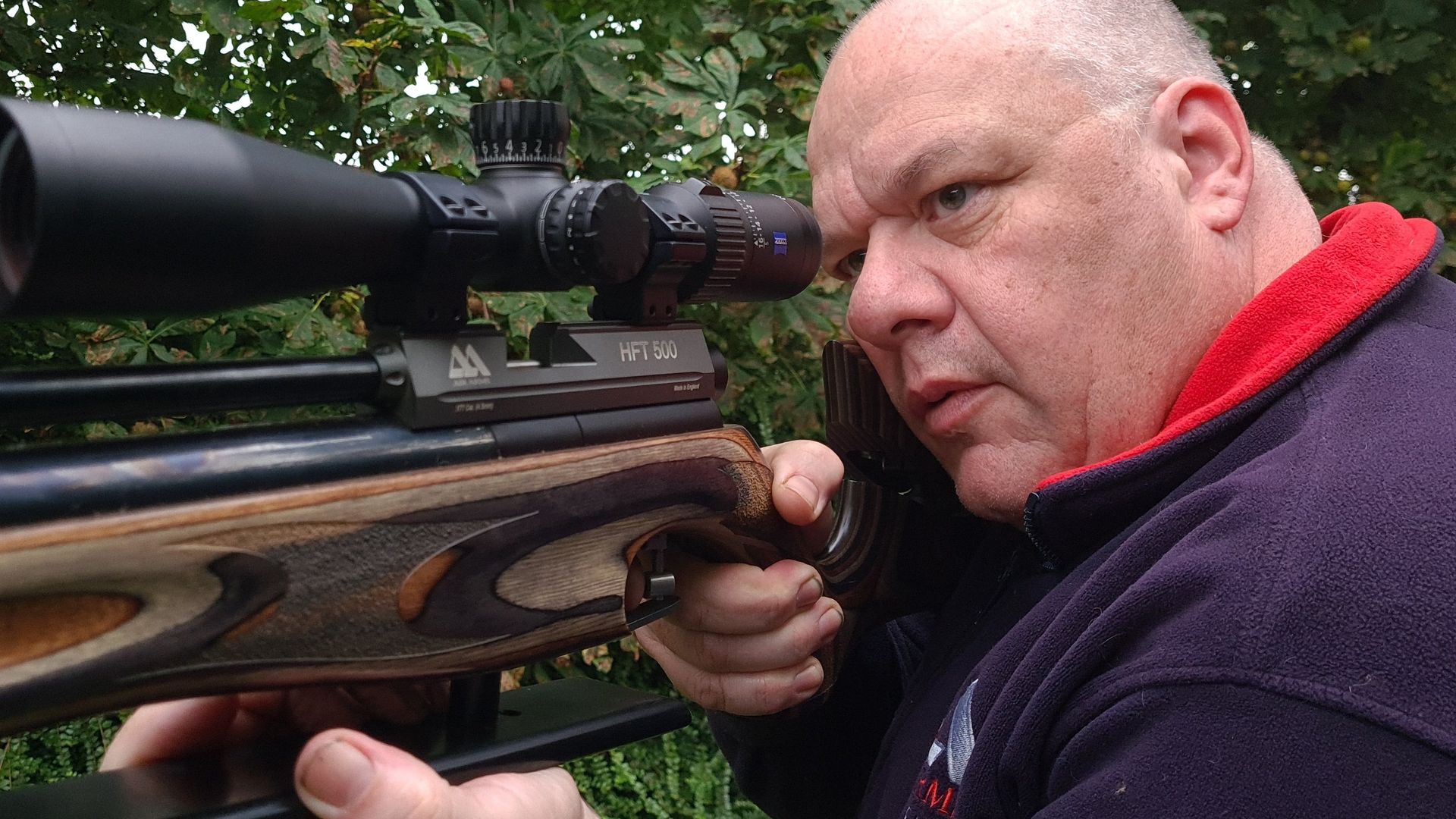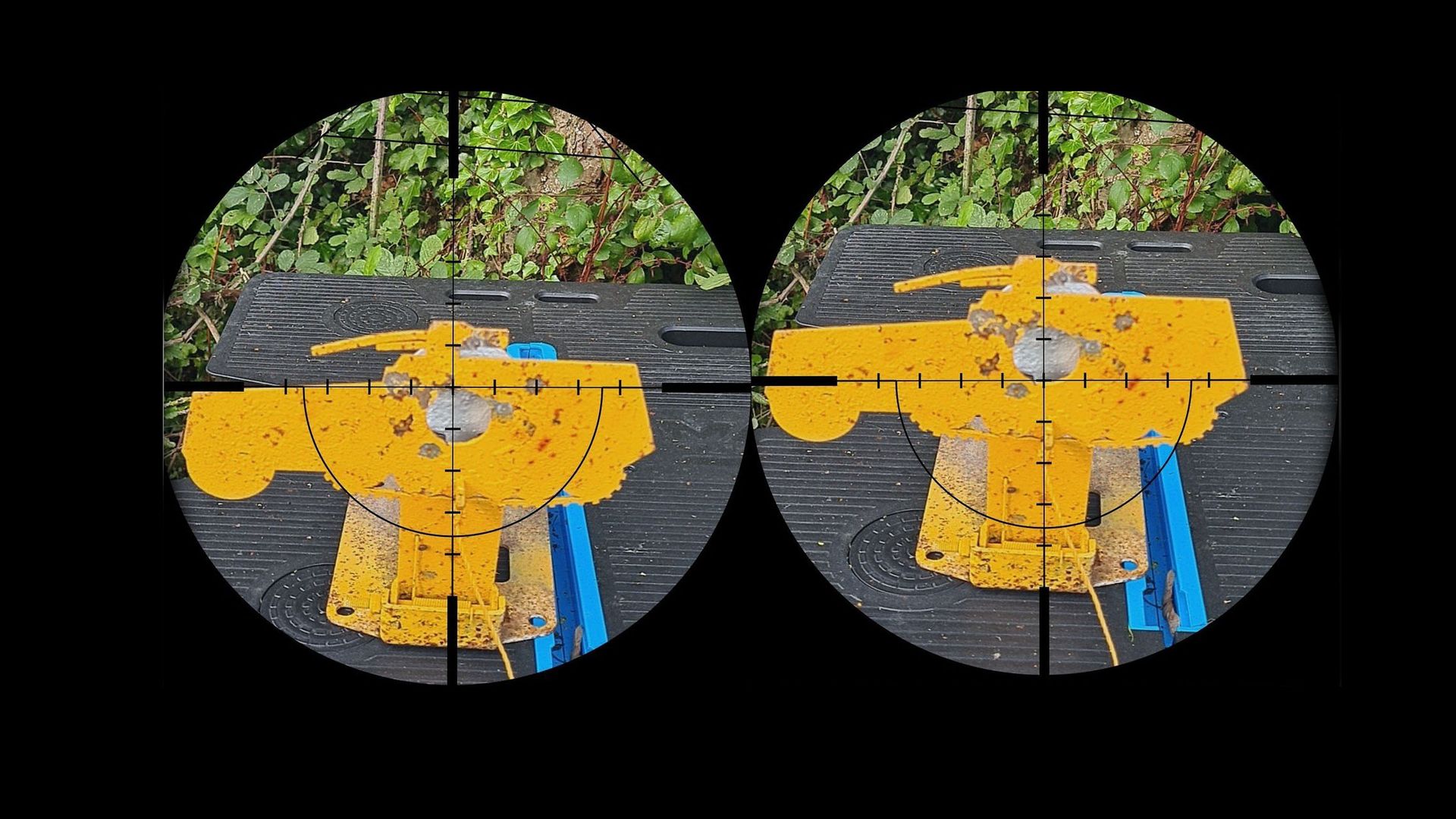Gary Chillingworth reveals a handy trick you can use to improve your rangefinding skills, whatever you enjoy shooting with your air rifle! Don't miss the video on rangefinding at the bottom of the page!
 credit: Archant
credit: Archant
For those of us who shoot HFT and don’t rely on scopes and rangefinders to work out our ranges, the head bob can be a very useful tool to use. I know that a lot of you are sitting there and wondering what I’m on about – has Gary finally lost the plot? To answer both of those questions; firstly, I will try and explain, and secondly, I lost the plot many years ago. At this point, if you have a scope knocking around that’s not attached to a rifle, or even one that is and you can use it safely, go and get it because it will help with what I am yammering on about.
Okay, so look at your scope and on the side, or on the front, you should have a parallax (PX) adjuster. Set this to around 25 yards and place your scope on a bench, pointing at a target around 25 yards away. Look at a point on the target and start moving your head left and right, and up and down, and you will see the cross hairs stay fixed in place.
Leave the PX adjuster set at 25 yards and point the scope at a target 40 yards, or 10 yards away, and again move your head up and down and left and right; this time you will see the cross hairs move around. This is parallax error and it can be very useful, and very bad for an HFT shooter!
I’m not going to go into what causes this error for two main reasons; no. 1 – I don’t have time within this piece and we want to get on with using or negating this error, and no. 2 – Jim Tyler wrote a brilliant piece on it which you can read here.
 credit: Archant
credit: Archant
PARALLAX ERROR EXPLAINED
PX error is when the target and the reticle are not on the same focal plane; to explain quickly, look at a point in the distance and place your arm in front of you with your thumb raised. Close one eye and your thumb is now obscuring the target, now move your head left and right and up and down and it will appear that your thumb is moving.
In reality, your thumb (the scope’s reticle) and the object have not moved, but it’s now left or right of the target. So, this is why, when you are taking a shot, it is always imperative that you place your head in exactly the same position every time, otherwise your eye could be slightly out of alignment and you could miss.
 credit: Archant
credit: Archant
JUDGING RANGE USING PARALLAX ERROR
With the PX adjuster set at 25 yards, a scope’s crosshairs will barely move on a 25-yard target, but on a 40-yard target, it will move around 1 mil-dot. So, knowing this – and all scopes and eyes are different – you can use it to your advantage.
For instance, my scope’s parallax is set at 28 yards, so when I approach a target, I initially look at the target and then I lie down and start to measure. I now know that it is a 15mm target (maximum 25 yards) and I move my head up and down. The crosshairs remain still and this tells me that the target is 25 yards away.
My next target is a shorter 15mm, and again, I bob my head up and down and now the cross hairs move, but no matter how much I move my head, I can’t get them to move outside of the kill zone, so I know it’s around 18 yards away.
My final 15mm target is a short one, and now, by my bobbing head, the cross hairs will move outside of the kill zone, telling me it’s 13 to 14 yards away.
With the long targets, I again bob my head, but I do it more slowly. I locate a part of the target (top of kill, top of plate …) that is measurable, and I raise my head until the scope start to blacken out. I then raise my scope so that the cross hairs are on the located part of the target, and then start to drop my eye until the scope begins to black out at the bottom. I can now measure how far the cross hairs have moved out from the top of the target.
If it’s moved 1 mil-dot, it’s 45 yards; if it’s moved 0.6 of a mil-dot, it’s closer to 40 yards; and if it's moved 0.3 of a mil-dot, it is around 35 yards.
This is a skill used by many of the top HFT shooters, and if you can get it to work, it is worth its weight in gold. Personally, I have just started to use it and so far it seems to be working. I have made a video on this subject on Shooting and Country TV, which you can see below... Let me know how you get on with it, and whether it has helped you or not.